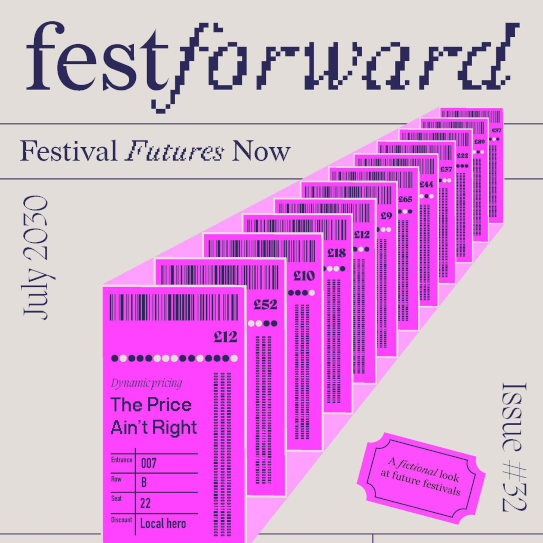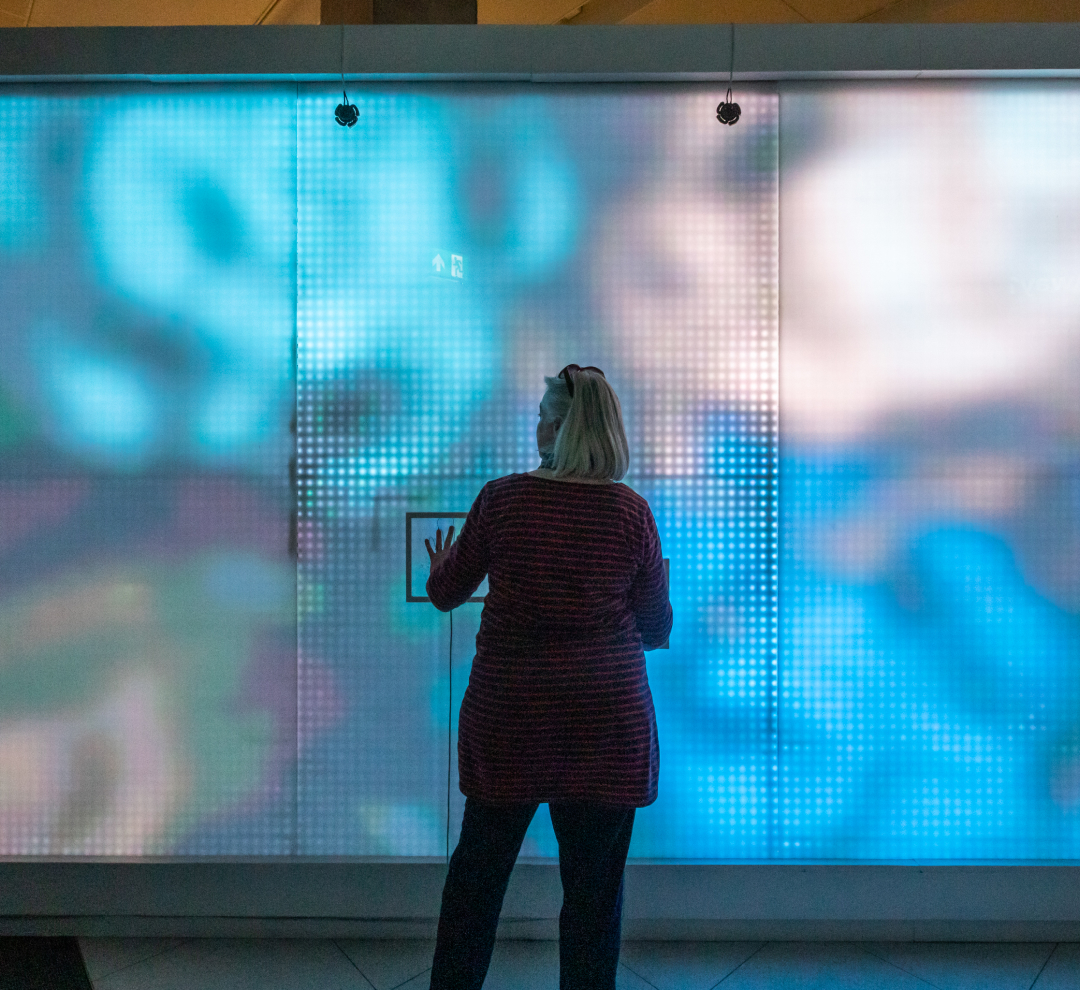In August 2022, Creative Informatics published the output from our Creative Horizon 3 research project, FestForward Magazine, a fictional, speculative cultural magazine, which is envisioned as Scotland’s leading cultural publication in 2030. At the heart of the project was the idea that the magazine and the methods we used to make it offer a creative and engaging way to start conversations about possible and preferable festival futures – for festivals and those who work with them, but also for policymakers, funders and other academics in this space.
The magazine was developed by Creative Informatics researchers Vikki Jones, Chris Elsden and Ingi Helgason, and designed in partnership with Glasgow-based futures design researchers, AndThen. All the content was based on interviews and workshops with people working in the festivals sector in the Edinburgh and South East Scotland region and explored the question of how digital technologies and data-driven innovation might support equitable and sustainable festivals in 2030.
The purpose of the project was to bring together two strands of work from existing Creative Informatics research – looking at ways to imagine equitable and sustainable festivals in the region and work around new framings of digital and data-driven festivals and festival economies, particularly in the context of the impact of COVID-19 restrictions on live events.
Revisiting this work allowed the research team to establish four key themes for the project:
- The uses and value of data from and for festivals, artists, performances, and audiences.
- Cultural work and platform labour – considering the shifting mediations of live and digital both on stage and off.
- Producing and experiencing live performance.
- New creative transactions – exploring alternative payment and distribution models for live events mediated through digital technologies.
The research was planned around the idea of participatory futuring – designing spaces and outputs with people working in the sector – and speculative design methods – that facilitated the creation of speculative 2030 imaginaries of equitable and sustainable festivals and helped with the further development of these themes in the context of understanding participants’ near future expectations for digital technologies and data-driven innovation.
The first stage involved semi-structured interviews with people working in the sector. From there, the research team and AndThen developed a series of ‘provotypes’ – near futures scenarios represented through visual storytelling and artefacts. From these provotypes, the team delivered a series of online and in-person workshops with people working in the festivals sector. On entering the workshop space, participants were given a new job as FestForward journalist and, inspired by our themed provotype scenarios, were asked to write headlines inspired by what they had seen, and discuss their thoughts, hopes, fears and challenges with one another. From here, the research team coded the headlines, reflected on the responses and brought them together to write and design the content in the magazine.
Unsurprisingly, given the rapid developments taking place in creative digital technologies, some of the technologies envisioned in FestForward were very much in use within a year of its publication. Most prominently, the imagined AI-powered scriptwriting software – Culture.ai – dated quickly. At the time of writing, Creative AI is quickly becoming a developing tool in the creative industries, as reflected in Creative Informatics’ AHRC-funded Creative AI Demonstrator project, which explores the potential of AI – the opportunities, as well as the challenges.
Other ideas developed in the magazine align with ongoing public conversations about data – what we are prepared to or left with little option not to give away, and the value we receive as a result. Or is there, and could there ever be, an algorithm that could account for the opportunity festivals offer to attend an event that is outside what you might usually choose? What data from other areas of your life would you be comfortable providing to a data-driven system to find it? These remain pertinent questions both for live events and festivals and for society more broadly.
Exploring the opportunities and value of data-driven innovation for the creative industries is at the heart of the Creative Informatics programme and FestForward explores the possibilities for the principles and practices of data collection, sharing and analysis. Through the lens of cultural work, which is one of the key themes of this research, the magazine envisioned the role of an independent Festivals Data Custodian and considered the impact of a collaborative data-driven approach for festivals in the region.
By 2030, FestForward imagines, cultural work will become more and more mediated and performed through platforms. The magazine explores a ‘day in the life’ of a freelance festival platform worker, and a cultural influencer, to highlight the nature of platform work in the festivals and performance sector that, in a contemporary context, is perhaps more closely associated with other digital media. This imaginary extends to a collective response from workers to form the Cultural Platform Labourers Union, which tracks the working time and conditions of its members. Discussion of a planned strike in July and August 2030 seeks to expose unequal opportunities and access to cultural work in the sector.
Digital technologies and data do not just support festivals and events, they are also ways to produce, present and mediate performance. In a contemporary context, festival programmes have begun to return to formats and sizes that resemble pre-pandemic norms, and perhaps some of the expanded notions of the potential of digital and data-driven performances that COVID-19 lockdowns necessitated have been set aside. However, the near future scenarios laid out in FestForward imagine a steadier evolution of perceptions of the value of digital and hybrid performances in the run-up to 2030 that bring back more of these experiences, as well as new and nuanced concepts of digital liveness.

